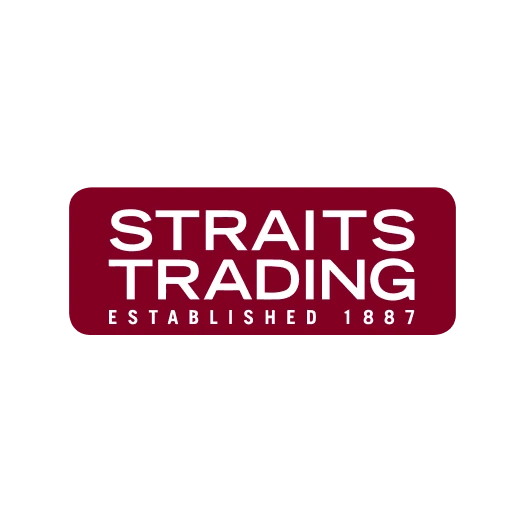Welcome to our comprehensive guide on inventory in business. In this article, I’ll explain what inventory is, its types, and why it’s vital for smooth business operations.
Inventory includes raw materials, work-in-progress, and finished goods that drive revenue and efficiency. By managing it effectively, I can minimize costs, prevent stockouts, and meet customer demand.
Let’s explore how effective inventory management can optimize operations and boost profitability. Ready to streamline your process? Get a free demo of HashMicro Inventory Management Software today!
Key Takeaways
|
Importance of Inventory in Business Operations
Inventory is a vital business asset that supports production and sales while ensuring smooth operations. Well-managed inventory helps meet customer demands, maintain optimal production levels, and minimize supply chain delays.
By optimizing stock levels, I can prevent shortages, reduce storage costs, and improve cash flow. Effective inventory management ensures business efficiency, profitability, and long-term success.
Types of Inventory

In inventory management, I categorize different types of inventory to ensure effective control and optimization. By doing so, I can streamline production, prevent stockouts, and minimize inventory aging for better efficiency.
Let’s explore the different categories of inventory:
- Raw materials: Raw materials refer to unprocessed materials used to create the final products. These materials form the foundation of the production process and are essential for manufacturing goods.
- Work-in-progress: Work-in-progress (WIP) inventory consists of partially finished goods that are still undergoing production. These goods are in the intermediate stage of the manufacturing process and require further processing or assembly.
- Work-in-process: Work-in-process (WIP) inventory refers to goods that are partially finished and still in the production phase. These are materials that have undergone some transformation but are not yet ready for sale.
- Finished goods: Finished goods are the result of the production process. They are the final products that are ready for sale to customers. These goods have passed through all the necessary manufacturing stages and are in complete and marketable form.
- MRO inventory: Maintenance, Repair, and Operations (MRO) inventory comprises items required to support production and business operations. These include tools, equipment, spare parts, and supplies necessary for maintenance, repair, and ongoing operations.
Inventory Valuation Methods
I use several methods to value inventory, depending on business needs. The three most common approaches are FIFO (First-In, First-Out), LIFO (Last-In, First-Out), and the weighted average method.
- FIFO method: This method posits that the earliest acquired stock is sold first, aligning the cost of goods sold with actual costs and ensuring the remaining inventory reflects current values.
- LIFO method: On the other hand, this method assumes the most recent inventory is sold first, often used to lower taxable income by assigning recent, higher costs to the cost of goods sold.
- Weighted average method: This method determines a weighted average unit cost, considering all inventory costs, useful for indistinct costs or variable prices.
The chosen inventory valuation method can significantly impact a company’s financial statements. It affects calculating the cost of goods sold, net income, and the value of remaining inventory. Each method has advantages and disadvantages, and the choice depends on the specific requirements and circumstances of the business.
For a more detailed explanation, you can go to our other article about inventory valuation. methods.
Inventory Management and Control

Effective inventory management helps me optimize the supply chain, minimize costs, and maintain a balance between supply and demand. By setting reorder points and monitoring stock levels, I can prevent stockouts and ensure smooth business operations.
Here are a few ways to ensure that inventory levels are maintained without running out of stock:
- Safety stock levels are established to buffer against demand or supply disruption variations. Maintaining a certain safety stock level allows companies to continue operations smoothly while waiting for new inventory.
- Implementing an inventory tracking system is another critical aspect of inventory control is to accurately monitor stock levels and movements. These systems can provide real-time data, allowing businesses to make informed decisions and avoid stockouts or excess inventory.
- Stock optimization aims to balance meeting customer demand and minimizing costs. Companies can optimize stock levels and reduce carrying costs by leveraging data analytics and forecasting techniques.
- Just-in-time inventory system is a popular method used in inventory management. It focuses on producing or receiving goods only when needed, reducing stock holding costs. This system allows businesses to respond quickly to changes in demand and avoid unnecessary inventory buildup.
Effective stock management and control help me boost efficiency, customer satisfaction, and profitability. By exploring MEIO, I can gain deeper insights into optimizing supply chain performance and achieving better results.
Inventory Turnover and Performance Metrics

Inventory turnover helps me measure how efficiently I sell goods within a specific period. By dividing COGS by average stock, I can assess performance, identify stock issues, and make better decisions to boost profitability.
In addition to inventory turnover, other performance metrics provide valuable insights into your inventory management. These include:
- Days of supply: This metric measures the number of days your current stock will last based on current sales levels and average usage.
- Fill rate: Fill rate measures the percentage of customer orders that can be fulfilled directly from stock, without backorders or delays.
- Stockout rate: Stockout rate quantifies the frequency and impact of stockouts, indicating the number of times your company experiences a stockout against customer demand.
To visually illustrate the importance of inventory turnover and performance metrics, let’s take a look at the following example:
XYZ Company, a leading retailer in Singapore, uses advanced inventory management software to track inventory turnover in real time. With a turnover ratio of 8.2, the company efficiently sells its stock, reduces holding costs, and boosts revenue.
By analyzing key metrics like days of supply, fill rate, and stockout rate, I can maintain optimal inventory levels. This proactive monitoring helps optimize the supply chain, enhance customer satisfaction, and improve overall profitability.
Consignment Inventory
Consignment inventory is a business model where I retain ownership of the goods while the retailer holds and sells them. This approach lets me promote consignment products, increase visibility, and expand market reach without upfront costs.
For retailers, consignment inventory allows them to offer more product variety with minimal investment. They only pay for what’s sold, reducing the risk of overstocking and improving cash flow efficiency.
Inventory Examples in Different Industries
Inventory management is a crucial part of my business operations across various industries. The types of inventory and management strategies I use may vary depending on the specific industry. Here are some examples of inventory in different sectors:
- Manufacturing industry: In manufacturing, inventory encompasses raw materials, work-in-progress items, and finished goods ready for sale.
- Service industry: In the service industry, stock includes intangible assets like information or documents used to provide client services, such as a consulting firm’s inventory reports.
- Retail industry: Retail stock is merchandise for sale, including diverse products, and must be managed to balance stock levels with customer demand.
- Maintenance and repair operations: MRO inventory in industries like maintenance includes essential items like tools, equipment, and spare parts to support operations.
Each industry faces unique inventory management challenges and requires tailored strategies to optimize stock levels, reduce costs, and effectively meet customer demands.
Inventory Control Challenges and Solutions
Effective stock control can be challenging for me due to several factors that affect accuracy and efficiency. Common issues I face include inaccurate demand forecasting, supply chain disruptions, and inadequate tracking systems.
- Inaccurate forecasting can lead to stock issues, lost sales, and increased inventory holding costs. To mitigate these risks, businesses should utilize data-driven techniques and tools to better predict demand and optimize stock.
- Supply chain disruptions can upset stock and customer satisfaction; strong supplier partnerships and proactive communication can help manage these challenges effectively.
- Inadequate tracking systems can make it difficult to monitor stock levels and locations, leading to inefficiencies and errors. Advanced tracking systems like barcodes or RFID could improve stock monitoring, reducing errors and enhancing efficiency in order fulfillment.
Inventory Best Practices and Strategies
To overcome these challenges, I implement best practices and strategies that optimize operations and boost efficiency. By using an automated inventory management system, I gain real-time visibility, prevent stockouts, and reduce holding costs while improving customer satisfaction.
- Utilize technology for inventory tracking: Implementing barcode or RFID systems helps me track stock accurately and efficiently. These technologies reduce human errors, boost productivity, and provide real-time data for smarter decision-making.
- Implement demand forecasting methods: By analyzing historical sales data, market trends, and customer behavior, I can predict demand patterns effectively. This allows me to adjust stock levels, avoid stockouts, and minimize excess stock.
- Apply Just-in-Time (JIT) and lean principles: JIT focuses on producing or receiving goods only when needed, reducing storage costs. Meanwhile, lean principles eliminate waste and streamline operations for more efficient stock management.
- Analyze historical sales data: Regularly reviewing sales and stock performance helps me identify slow-moving or obsolete items. This analysis ensures stock remains optimized, aligned with demand, and supports data-driven decisions.
- Collaborate with suppliers: Building strong supplier relationships ensures timely deliveries and stable inventory replenishment. It also enables me to adapt quickly to demand changes and reduce the risk of stockouts.
- Conduct regular inventory reviews: Performing periodic audits helps me spot inefficiencies and make timely adjustments. This keeps inventory lean, minimizes carrying costs, and maintains operational efficiency.
With HashMicro’s Inventory Management System, I can easily implement effective strategies to overcome stock challenges. For more details, I can download the pricing scheme by clicking the banner below.
Future Trends and Innovations in Inventory Management
The future of stock management is driven by rapid technological advancements and changing industry demands. As I strive for greater efficiency and cost savings, innovation continues to transform how stock is managed.
Emerging technologies such as automation, AI, machine learning, IoT, and cloud-based inventory systems are reshaping stock processes. These tools enhance accuracy, streamline tracking, and provide real-time visibility across the supply chain.
With these advancements, I can forecast demand more accurately, make data-driven decisions, and maintain optimal stock levels. Ultimately, these trends enable improved efficiency, cost reduction, and stronger customer satisfaction.
Achieve Effective Inventory Management with HashMicro
HashMicro’s Inventory Management System provides advanced features that help me streamline operations and improve efficiency. Here are five key features that I find most effective for managing stock in Singapore.
- RFID Stock In-Out Automation: This feature uses RFID technology to automatically track stock movement in and out of warehouse racks, ensuring real-time visibility and reducing manual errors.
- Stock forecasting: By leveraging predictive analytics, I can forecast future stock needs based on sales data and trends, helping me maintain optimal stock levels.
- Run-rate reordering rules: This feature automates reordering based on how quickly stock is consumed, allowing me to restock efficiently and avoid shortages.
- Racking capacity with putaway strategy: The system calculates racking capacity and applies intelligent putaway rules, optimizing warehouse space and speeding up order fulfillment.
- Quality control management: This feature integrates quality checks throughout the stock process, ensuring only high-quality products reach customers and protecting my brand reputation.
“Inventory represents the lifeblood of a business, encompassing raw materials, work-in-progress, and finished goods. Effective stock management ensures consistent cash flow, minimizes waste, and keeps operations running smoothly.”
— Angela Tan, Regional Manager
Conclusion
Inventory management is a pivotal element in orchestrating supply chain operations, directly influencing a business’s ability to meet customer demands efficiently and effectively. Implementing robust stock management practices streamlines operations and fortifies a company’s financial health through precise stock valuation methods.
Among the many solutions available, I find HashMicro’s Inventory Management Software to be a true example of innovation and efficiency. It’s designed to meet my business needs, integrating advanced features that elevate stock management to a new level of excellence.
I invite you to access a free demo of HashMicro’s system today and experience its transformative power firsthand. Discover how it can revolutionize your stock processes and set your business on a path to success in the competitive marketplace.

FAQ about What is Inventory?
-
What do you mean by inventory?
Inventory refers to all the items, goods, merchandise, and materials held by a business for selling in the market to earn a profit.
-
What is the main purpose of inventory?
The purpose of the stock is to provide a buffer between production and sales, smoothing out the flow of goods and ensuring that products are available when customers order them.
-
How do you explain an efficient inventory process?
An efficient stock management process should cover: Planning & forecasting, purchasing & ordering, receiving, storing, & packing, stock tracking, and, lastly, order fulfillment.

































